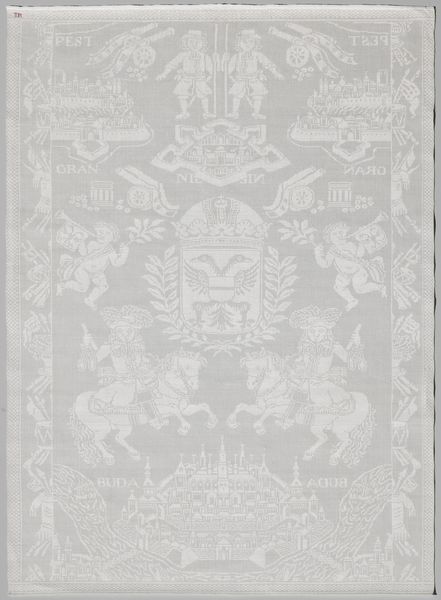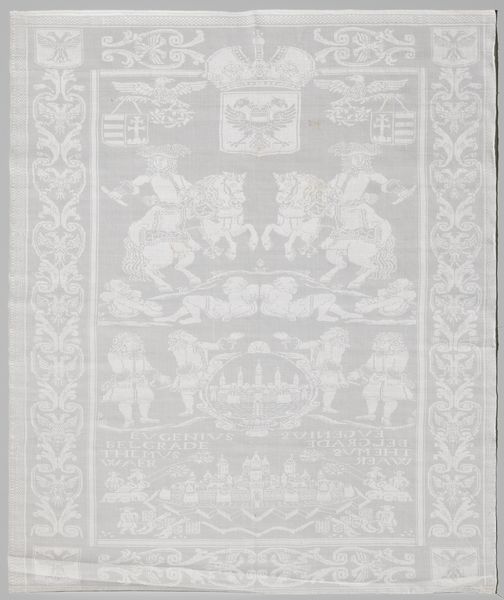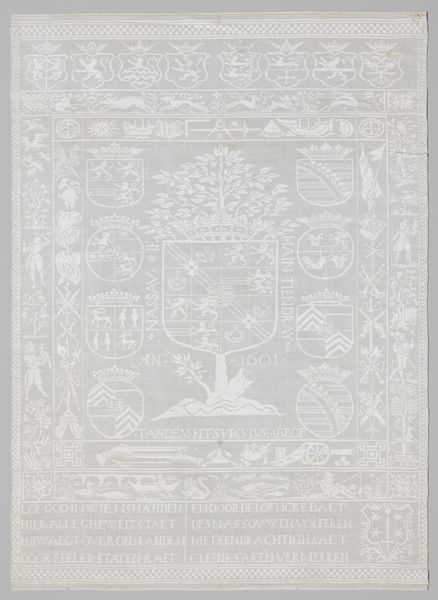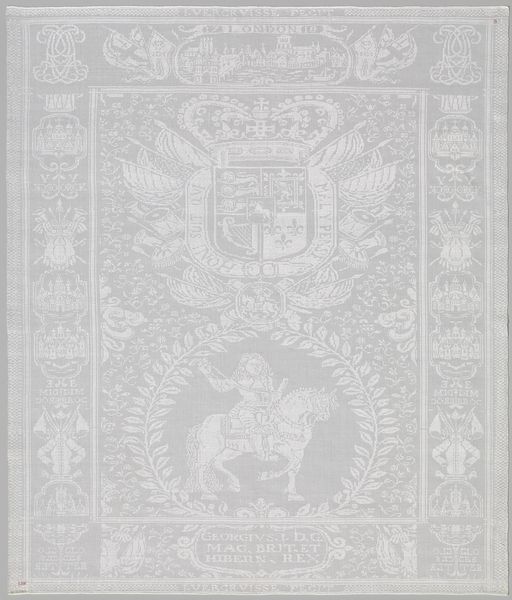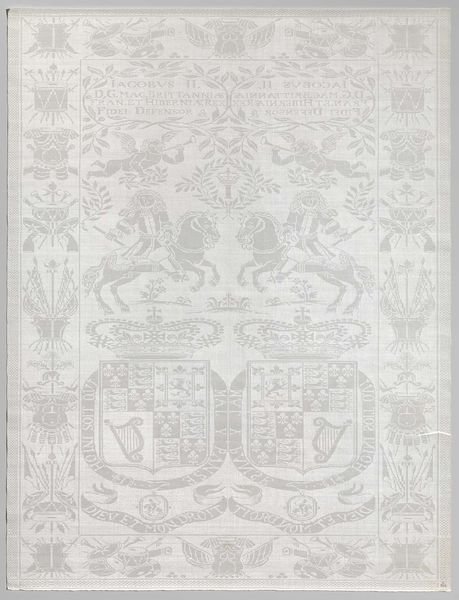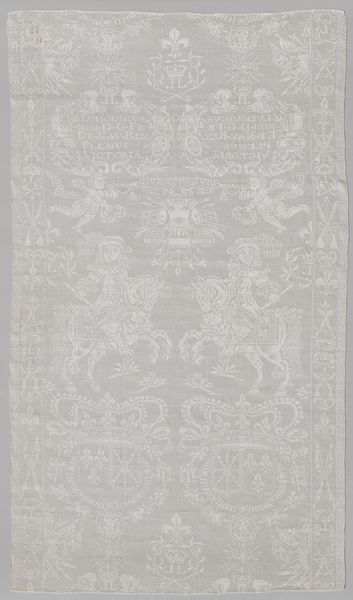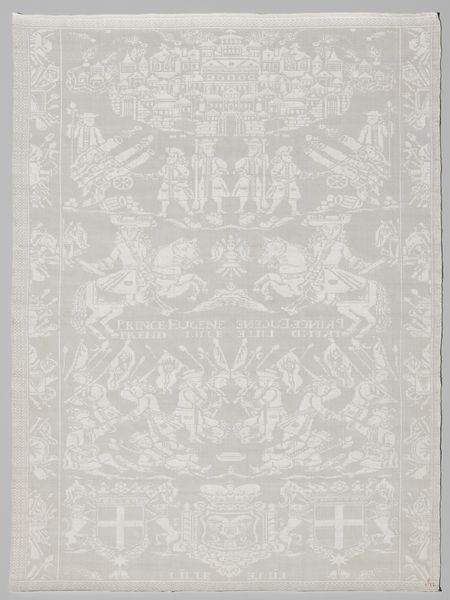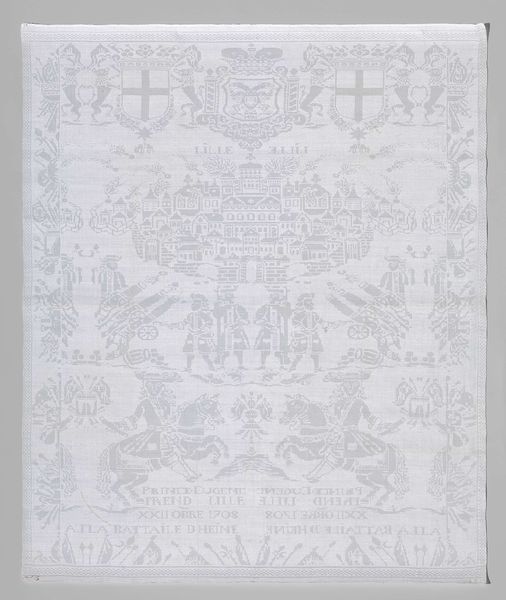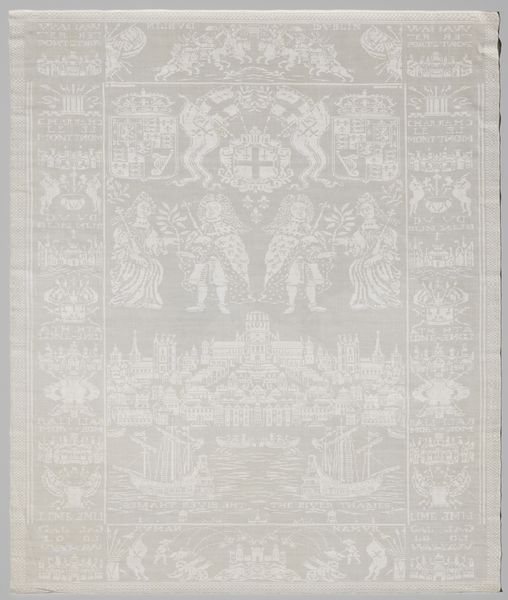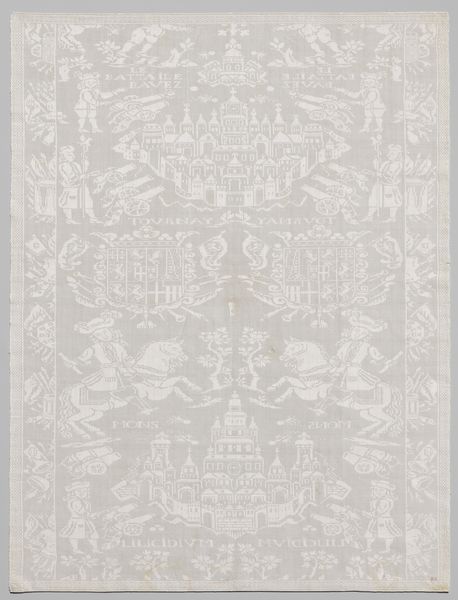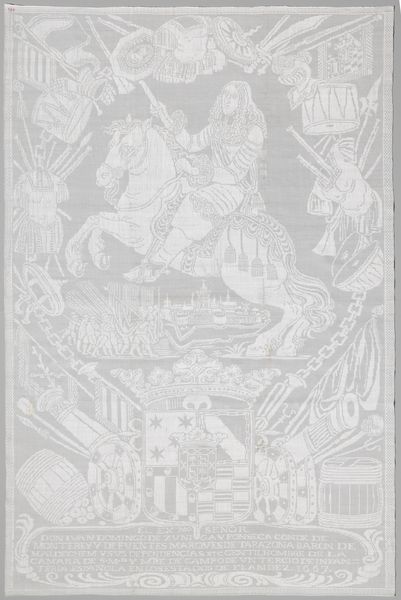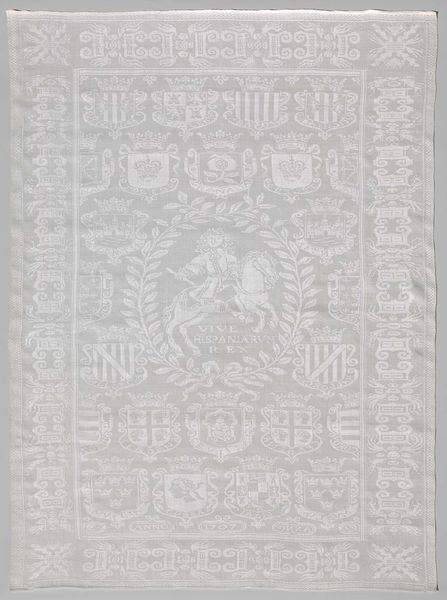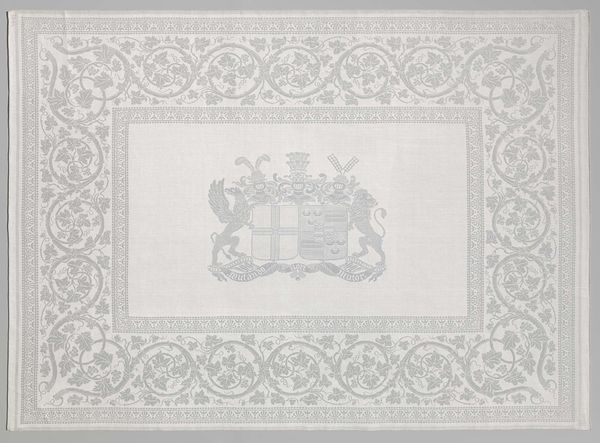
weaving, textile
#
natural stone pattern
#
rippled sketch texture
#
narrative-art
#
baroque
#
weaving
#
textile
#
repetitive shape and pattern
#
geometric
#
fabric design
#
repetition of pattern
#
pattern repetition
#
history-painting
#
textile design
#
imprinted textile
#
layered pattern
#
funky pattern
Dimensions: height 104 cm, width 88 cm
Copyright: Rijks Museum: Open Domain
Curator: This linen napkin, titled "Servet met verovering Namen," was created around 1695 by an anonymous artist. It is currently held in the Rijksmuseum collection. Editor: At first glance, it appears so subtle. Like a ghostly impression of a memory pressed into fabric, or like an antique map on parchment. It’s mostly white-on-white, what is immediately catching your attention? Curator: For me, the choice to depict the capture of Namur in linen resonates deeply. War, power, and conquest memorialized not in stone or metal, but on a humble domestic textile. It’s an incredibly subversive commentary, perhaps unintentional, on the fragility of victory and the domestic sphere implicated in these acts of aggression. Editor: And it’s dense with symbolism, those armorial bearings, and triumphal processions. It seems to adhere strictly to certain visual vocabularies associated with the celebration of military prowess and power. The recurring sun motif is a reference to Louis XIV, right? How do the visuals speak to these ambitions of glory and historical narratives? Curator: Exactly. And placing them onto a napkin, an item destined to be stained and discarded, subtly undermines that grandiose narrative. It almost speaks to the cyclical nature of power; how today’s triumphs become tomorrow's forgotten stains. This would have been accessible to a range of social classes, embedding these complex political messages in domestic routines. Editor: Yet there's an intriguing echo of immortality sought by association with such iconography. We look at these coats-of-arms and recognize visual lineages, stories woven over centuries that endure on the symbolic level, even after the physical items are degraded, lost, or discarded. The images carry that continuity. Curator: I would agree. The endurance you mentioned can also mean the endurance of patriarchal and imperialist ideals being transmitted, subtly yet continuously. It makes you consider who produced this and for what precise market and which social ideologies are repeated here, almost unnoticed, throughout generations. Editor: Ultimately, what is communicated by it's existence today, is really, I feel, open to interpretation. A really intriguing artefact. Curator: Absolutely, the multiplicity of interpretations across different eras really highlights how powerful material culture is as a site of shifting and competing ideologies.
Comments
No comments
Be the first to comment and join the conversation on the ultimate creative platform.
